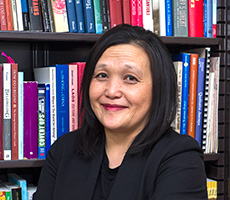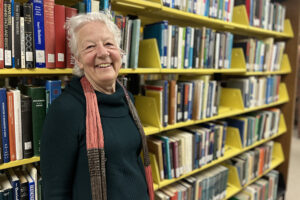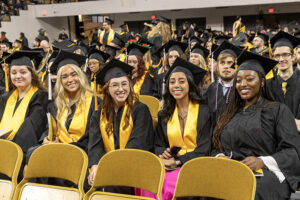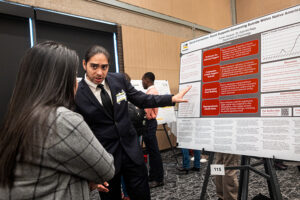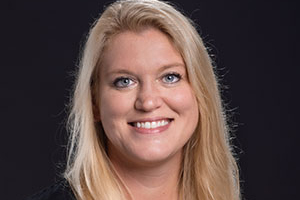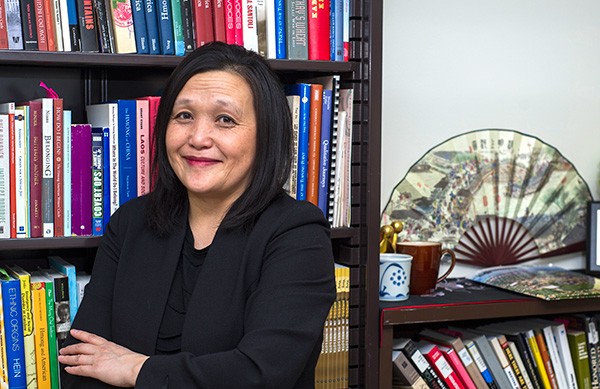
Chia Youyee Vang, associate professor of history, is among the first 50 women chosen for the new Wisconsin Women Making History website (womeninwisconsin.org). The site will eventually feature more than 200 profiles – largely untold histories of women whose leadership and public participation have contributed to Wisconsin.
A Hmong American, Vang moved to St. Paul, Minnesota, from Laos in 1980 at age 9.
She talks about her academic interests, being an advocate for Hmong cultural preservation and education and her experiences in a diaspora community.
How did your experience as a refugee lead to your academic interests?
My family lived in Laos where there were no schools for kids like me. I attended school briefly in a Thai refugee camp, but my formal education didn’t begin until age 9 in the U.S. Technically I was in third grade, but I had a lot of catching up to do. I love reading and learning, so by middle school I started to feel that I was at my peers’ level.
I grew up in St. Paul where there were many Hmong people so I was fairly familiar with Hmong history and culture. When you’re young, you want to understand things different from you. In college, I was more interested in European history and international relations. But in graduate school I became more interested in the experiences of displaced communities. Most of my research has focused on refugee resettlement, primarily in Western countries following the Vietnam War (or, in Vietnam and Laos, the “American War”). There is still so much to be written about, especially from the perspective of Hmong people. I want to contribute to a better understanding of Hmong history and contemporary life.
How difficult is it to research about diaspora communities?
Today Hmong people are dispersed around the world. The Internet and our ability to travel internationally allow us to interact with people in other locations and in the homelands. In the Hmong case, ethnic identity is very important regardless of where we end up. Ethnic ties facilitate my research. People do not treat me as an outsider even if I’m meeting them for the first time.
Who enrolls in your courses, and what do they learn?
Since I came to UWM in 2006, I have taught courses on Hmong history, the Vietnam War, and Asian-American history. I have also led short-term study abroad programs to Southeast Asia where American students learn about the history and cultures in the region. In 2009, I established a certificate program in Hmong diaspora studies (about 600 Hmong-American students are on campus). My course on the Vietnam War had enrolled up to 200 per semester from all majors. Because of my life experiences, some students assume that I will have an anti-war bias, but the course simply presents different perspectives on the political, social and cultural history of the war and its lasting impact on people in the U.S. and in Southeast Asia. In my Hmong history course, two-thirds of the students are Hmong, which means that the other one-third is in the minority, probably for the first time in a classroom. It challenges them to rethink their position in society.
Why is your work as an advocate for women of color at UWM important?
We all need to have people we identify with. I grew up with other Hmong people, so I didn’t have an identity crisis or crisis about my place in America. However, there were not a lot of people who looked like me in different professions. Fortunately, I had a lot of mentors – teachers, counselors, coaches – who believed in me. Especially for women students of color, I want to inspire them to achieve their dreams.
How does it feel to be one of the first chosen for the new website?
Honored and humbled, but also conflicted. I know so many distinguished women who deserve to be on that list.
What else should readers know about you?
I’m the first person in my sub-clan, the Vang clan, from my village to earn a PhD. When I graduated in 2006 from the University of Minnesota, my family held a special celebration that was attended by more than 300 people, including 40 from as far as California. They were so proud. For my community, this was very important. I’m one of only a handful of tenured Hmong-American professors in the country.
